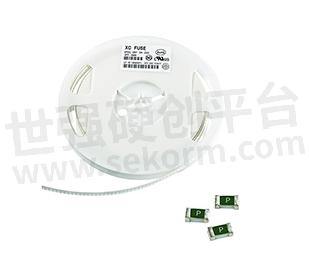What are the Differences in Performance and Applications between Slow Blown Fuses and Fast Blown Fuses?

The main difference between a slow fuse and a fast fuse is its ability to withstand instantaneous pulse current, which means that it can withstand the impact of surge current when switching on and off the machine without action, thus ensuring the normal operation of the equipment. Therefore, the slow fuse is often referred to as surge resistant fuse. From a technical perspective, slow melting fuses have a large melting heat value of I2t, and the energy required for fuse melting is relatively high. Therefore, for fuses with the same rated current, slow melting has a much stronger ability to withstand pulses than fast melting.
Due to the fact that the I2t of a slow fuse is larger than that of a fast fuse of the same specification, the fusing time in the event of overcurrent in the circuit will also be slower than that of a fast fuse. Is it possible that the protection performance may be worse than some people are concerned about? We said no! Because once a circuit malfunctions, the overcurrent will not disappear on its own, and the energy of continuous overcurrent will greatly eXCeed the I2t of the fuse. No matter what type of fuse is blown, the time difference between slow and fast fusing is not very important for its protection requirements. Slow fusing will only have an impact on the protection performance when there are sensitive components in the protected circuit that need to be protected.
Due to these differences, slow fuse and fast fuse will be applied in different circuits: fast blown fuses must be used in pure resistive circuits (with no or little surge) or circuits that need to protect sensitive and valuable devices such as ICs; The capacitive or inductive circuits (with surges when switching on/off) and the power input/output parts should preferably use slow blown fuses; In addition to protecting the circuits of ICs, most situations where fast fuses are used can switch to slow fuses to improve their anti-interference ability; On the contrary, if a slow blown fuse is used in a place where a fast blown fuse is used, it often leads to the phenomenon of the fuse not working properly when it is turned on.

Fig.1
- +1 Like
- Add to Favorites
Recommend
- Here are Some Practical Tips to Know about Fuses
- Discussion on Disposable Blown Fuses
- The Difference between Self Recovery Fuse and Blown Fuse
- Repair Methods for Fuses -0805 Fuses
- The Difference between Fuses and Fuses
- GRL Provides Fuses and Fuses for BYD AUTO Energy Storage Battery Production Line
- What Is The Difference between Resettable Fuses and Traditional Fuses?
- Guidelines for Selecting Self Restoring Fuses and Disposable Fuses
This document is provided by Sekorm Platform for VIP exclusive service. The copyright is owned by Sekorm. Without authorization, any medias, websites or individual are not allowed to reprint. When authorizing the reprint, the link of www.sekorm.com must be indicated.





























































































































































































































































































































































































































































































































































































































































































































































































































































































